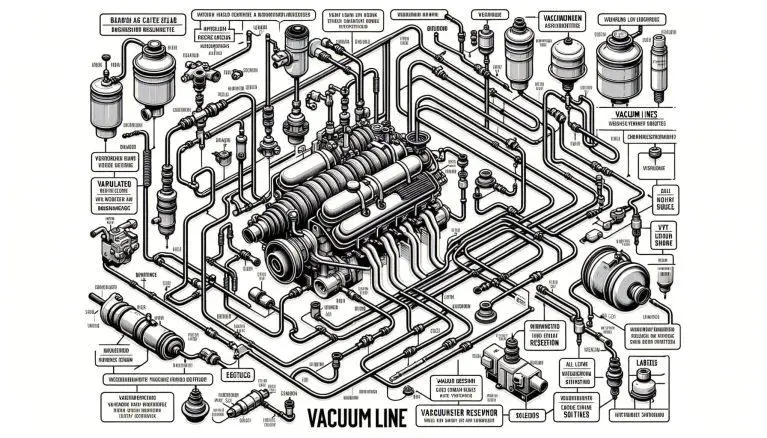2018 Ford F150 Fuel Economy
Last Updated on by David Jon
In the automotive world, few topics are discussed as regularly as fuel efficiency – it’s rightly a key consideration for both everyday Ford owners and severe DIY enthusiasts. In this article, we draw upon our wealth of mechanical experience to offer in-depth analysis and professional advice on the 2018 Ford F150’s fuel economy. So, whether you’re a lifelong devotee of Ford maintenance, a passionate mechanic, or simply an interested car owner, rest assured you’ll find the insights contained herein both valuable and compelling.

Overview of the 2018 Ford F150 Fuel Economy
The 2018 Ford F150 presents an impressive combination of power, utility, and fuel efficiency. Ford employs innovative design and engineering practices to optimize the vehicle’s fuel economy. This article will delve into these mechanisms and compare the efficiency of this 2018 model with its predecessors.
Mechanics and design contributing to fuel efficiency
Ford has integrated several features into the F150 to improve its fuel efficiency. Auto Start-Stop technology has been implemented in all F150 engines. It shuts off the engine when the vehicle is stationary and restarts it when the driver lifts the foot off the brake pedal. This eliminates unnecessary fuel consumption during idling periods. Added to that, the F150 employs a 10-speed automatic transmission that optimizes gear progression and engine power, reducing fuel consumption further.
Comparisons with previous Ford F150 models
When compared to the prior models, the 2018 Ford F150 stands out in terms of fuel economy. Due to its weight reduction from an aluminum-alloy body and innovative engine technology, this 2018 model surpasses the fuel efficiency of its predecessors – a testament to Ford’s dedication to advancement.
Fuel economy ratings by various official bodies
The 2018 Ford F150 has received promising fuel economy ratings from several official bodies. The revered Environmental Protection Agency (EPA) lists its fuel consumption as low as 20 miles per gallon (mpg) in the city and as high as 25 mpg on highways. This, for a full-sized pickup truck, is commendable.
The Engine Options and Their Fuel Efficiencies
Given the multiple engine options for the 2018 Ford F150, the fuel economy varies accordingly. We’ll explore the fuel efficiencies of each engine option below.
The 3.3L V6 engine
The default 3.3L Ti-VCT V6 engine offers a respectable fuel economy. Being significantly lighter than its predecessor aids its efficiency, providing up to 19 mpg in the city and 25 mpg on the highway.
The 2.7L EcoBoost V6 engine
Even more efficient is the 2.7L EcoBoost V6 engine offering a remarkable fuel efficiency; EPA rates it for 20 mpg in the city and 26 mpg on the highway. Its twin-turbocharge and direct injection features certainly contribute to its superior efficiency.
The 5.0L V8 engine
The much larger 5.0L Ti-VCT V8 engine provides a solid balance between power and fuel efficiency. Despite the higher power output, EPA rates it for 17 mpg in city conditions and 23 mpg on the highway.
The 3.5L EcoBoost engine
Two versions of the 3.5L EcoBoost engine are available for the 2018 Ford F150, both of them boasting impressive fuel efficiency for their sizes. The regular version yields up to 18 mpg in the city and 25 mpg on the highway.
The 3.5L High Output EcoBoost engine
The High Output version of the same 3.5L EcoBoost engine maximizes power and control at a slightly lower efficiency – recording 17 mpg for city and 23 mpg for highway usage on the EPA tests.
Factors Influencing the F150’s Fuel Economy
The fuel economy of the 2018 Ford F150 is influenced by a variety of factors, including driving habits, payload, maintenance, and environmental aspects.
Impact of driving habits
Aggressive driving, including hard accelerations and sudden braking, can drastically cut fuel efficiency. Practicing smooth, steady driving can augment the F150’s fuel economy significantly.
Effect of payload and towing
Carrying heavy payloads or towing large objects affects the overall fuel economy. It requires more energy to move a heavier truck, hence more fuel is consumed. Reducing unnecessary weight can help improve fuel mileage.
Role of regular maintenance
Regularly keeping the vehicle in optimal running condition is essential for fuel economy. This includes timely oil changes, keeping tires properly inflated, and ensuring the engine is in top shape.
Influence of environmental factors
External factors such as temperature, terrain, and wind resistance also affect fuel efficiency. Operating the vehicle in colder climates or high-altitude areas may result in higher fuel consumption.

Fuel Efficiency Rating: City Driving
When it comes to city driving, the F150 demonstrates impressive fuel economy compared to other vehicles in its class.
Specific fuel consumption figures
As mentioned earlier, depending on the engine, city fuel consumption figures can go as low as 20 mpg for the 2.7L EcoBoost and as high as 19 mpg for the 3.3L V6 engine.
Comparisons with other vehicles in class
In comparison with other full-sized pickup trucks in its class, the 2018 Ford F150 boasts superior city fuel economy. This attribute has been a major selling point for Ford.
Methods to improve fuel economy in city driving
Improving city driving fuel economy requires reducing idling, planning routes to avoid heavy traffic, and applying smooth, gradual accelerations and decelerations.
Fuel Efficiency Rating: Highway Driving
On the highway, the 2018 Ford F150 also performs commendably.
Specific fuel consumption figures
For highway driving, the F150 can reach an upward of 25 mpg, depending on the engine choice. The 2.7L EcoBoost tops this category.
Comparisons with other vehicles in class
Compared to other full-sized pickups, the F150’s fuel economy shines, even on the highway. It outperforms most competitors in its class, further cementing Ford’s superiority in fuel economy.
Ways to optimize highway fuel economy
Maintaining a steady speed, minimizing heavy payloads, and using cruise control where possible are optimal strategies for improving highway fuel economy.
Fuel Efficiency Rating: Combined Driving
In terms of combined city and highway driving, the 2018 F150 stands out in its class.
How combined driving ratings are determined
Combined fuel efficiency ratings are calculated using a weighted average of city and highway fuel consumption figures. This gives a more accurate portrayal of a vehicle’s fuel efficiency under normal usage conditions.
The F150’s combined driving fuel efficiency
For combined driving, the 2018 Ford F150 can reach up to 22 mpg depending on the engine type, placing it among the top full-sized pickups in terms of combined fuel consumption.
Tips for improving combined driving fuel economy
Optimal driving habits, regular maintenance, and an understanding of how environmental factors and payloads affect fuel consumption can help enhance combined driving fuel economy.
Tips for Improving the 2018 Ford F150’s Fuel Economy
Effective driving techniques
Gentle, conservational driving techniques such as gradual acceleration, avoiding high speeds, and minimizing idling can improve fuel economy.
Essential maintenance practices
Keeping your F150 in optimal running condition is key for fuel efficiency. This includes timely oil and filter changes, ensuring correct tire pressure and alignment, and using engine tune-ups to keep your engine running smoothly.
Recommended fuel types and additives
Using the manufacturer-recommended fuel type is advisable for maintaining the fuel economy of your F150. Although some additives market fuel saving benefits, their effect on long-term engine health is uncertain. Therefore, they must be used sparingly and wisely.
Maintenance and Fuel Economy
The importance of proper maintenance in fuel economy
Neglecting regular maintenance can lead to decreased fuel economy over time. Neglected components may function less efficiently and demand more fuel to operate.
Common maintenance issues affecting fuel efficiency
Common issues include under-inflated tires, dirty air filters, or aging spark plugs. These problems can impact the fuel economy by making the engine work harder than necessary.
Maintenance tips for enhancing fuel economy
Timely oil and filter changes, tire rotations, and regular inspections can maintain or even boost the F150’s fuel economy.
Reliability and Longevity of the 2018 Ford F150
Link between reliability and fuel economy
A reliable vehicle not only provides peace of mind but also maintains its fuel economy. Keeping an F150 reliable involves proper maintenance, which in turn sustains its fuel efficiency.
Predicted longevity of the 2018 Ford F150
With proper maintenance and care, it’s not uncommon for Ford F150s to surpass 200,000 miles. This extends to the 2018 model, which, with its advanced technology and design, is built to last.
Impact of regular maintenance on longevity and fuel economy
Regular maintenance not only prolongs a vehicle’s lifespan but also maintains its fuel efficiency by ensuring all systems and components are working as intended.
Conclusion: Is the 2018 Ford F150 Fuel-Efficient?
Digesting the fuel economy ratings
Given the 2018 Ford F150’s fuel economy figures, it is among the most fuel-efficient full-sized pickup trucks available on the market.
Weighing fuel efficiency against other vehicle features
While fuel efficiency is a crucial factor, it must be weighed against other important factors such as towing capacity, payload, reliability, and safety features. Fortunately, the 2018 Ford F150 shines in all these aspects as well.
Final thoughts on the F150’s fuel economy
In conclusion, the 2018 Ford F150 is a remarkably fuel-efficient choice within its truck category, providing a balanced mix of power, utility, and efficiency. It stands as a testament to Ford’s ongoing commitment to deliver vehicles that offer superior performance along with responsible fuel consumption.


